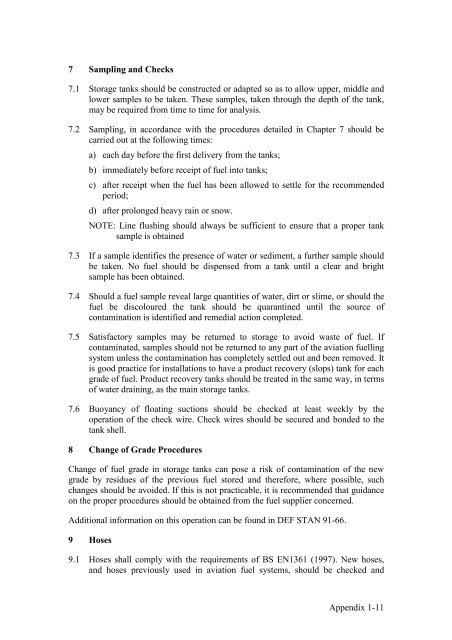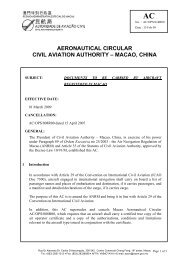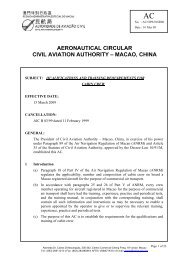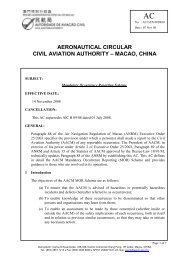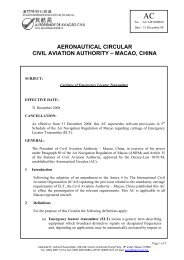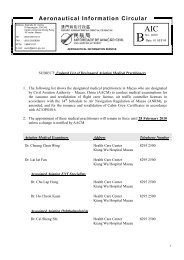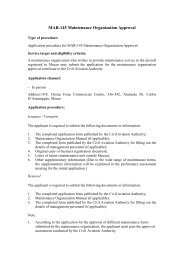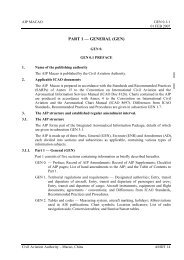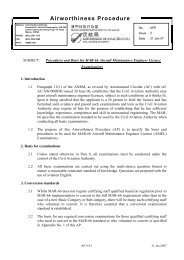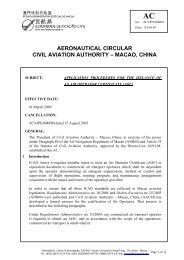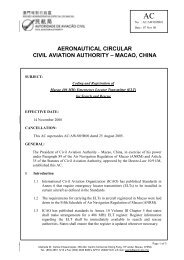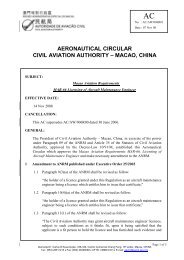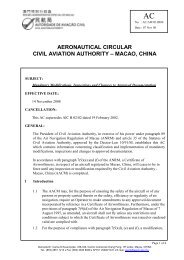Aviation Fuel at Aerodromes - Storage, Handling and Quality Control
Aviation Fuel at Aerodromes - Storage, Handling and Quality Control
Aviation Fuel at Aerodromes - Storage, Handling and Quality Control
Create successful ePaper yourself
Turn your PDF publications into a flip-book with our unique Google optimized e-Paper software.
7 Sampling <strong>and</strong> Checks<br />
7.1 <strong>Storage</strong> tanks should be constructed or adapted so as to allow upper, middle <strong>and</strong><br />
lower samples to be taken. These samples, taken through the depth of the tank,<br />
may be required from time to time for analysis.<br />
7.2 Sampling, in accordance with the procedures detailed in Chapter 7 should be<br />
carried out <strong>at</strong> the following times:<br />
a) each day before the first delivery from the tanks;<br />
b) immedi<strong>at</strong>ely before receipt of fuel into tanks;<br />
c) after receipt when the fuel has been allowed to settle for the recommended<br />
period;<br />
d) after prolonged heavy rain or snow.<br />
NOTE: Line flushing should always be sufficient to ensure th<strong>at</strong> a proper tank<br />
sample is obtained<br />
7.3 If a sample identifies the presence of w<strong>at</strong>er or sediment, a further sample should<br />
be taken. No fuel should be dispensed from a tank until a clear <strong>and</strong> bright<br />
sample has been obtained.<br />
7.4 Should a fuel sample reveal large quantities of w<strong>at</strong>er, dirt or slime, or should the<br />
fuel be discoloured the tank should be quarantined until the source of<br />
contamin<strong>at</strong>ion is identified <strong>and</strong> remedial action completed.<br />
7.5 S<strong>at</strong>isfactory samples may be returned to storage to avoid waste of fuel. If<br />
contamin<strong>at</strong>ed, samples should not be returned to any part of the avi<strong>at</strong>ion fuelling<br />
system unless the contamin<strong>at</strong>ion has completely settled out <strong>and</strong> been removed. It<br />
is good practice for install<strong>at</strong>ions to have a product recovery (slops) tank for each<br />
grade of fuel. Product recovery tanks should be tre<strong>at</strong>ed in the same way, in terms<br />
of w<strong>at</strong>er draining, as the main storage tanks.<br />
7.6 Buoyancy of flo<strong>at</strong>ing suctions should be checked <strong>at</strong> least weekly by the<br />
oper<strong>at</strong>ion of the check wire. Check wires should be secured <strong>and</strong> bonded to the<br />
tank shell.<br />
8 Change of Grade Procedures<br />
Change of fuel grade in storage tanks can pose a risk of contamin<strong>at</strong>ion of the new<br />
grade by residues of the previous fuel stored <strong>and</strong> therefore, where possible, such<br />
changes should be avoided. If this is not practicable, it is recommended th<strong>at</strong> guidance<br />
on the proper procedures should be obtained from the fuel supplier concerned.<br />
Additional inform<strong>at</strong>ion on this oper<strong>at</strong>ion can be found in DEF STAN 91-66.<br />
9 Hoses<br />
9.1 Hoses shall comply with the requirements of BS EN1361 (1997). New hoses,<br />
<strong>and</strong> hoses previously used in avi<strong>at</strong>ion fuel systems, should be checked <strong>and</strong><br />
Appendix 1-11


